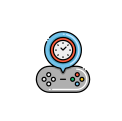

Your post made me think about kind of a reverse experience. One of the first games that deeply engrossed me and resonated with me was Alan Wake. I played it in my teens on a big old CRT (I believe it was like 40 inches, but a 4:3 aspect). I literally couldn’t stop, it was during summer holidays and I didn’t even open the blinds to be more immersed in the darkness. I binged through the game in about a week straight. I still consider it one of my all-time favourite games. But recently I started the remaster and just couldn’t get into it for some reason. Just didn’t click.
I am still waiting eagerly for the second game, and definitely will try again to get into the remaster. Maybe the understanding that I can’t recapture nostalgia will help me take it for what it is, not what I remember it being. Because I believe that even separate from that magical experience it’s still a good game that I will probably dig.



Fiio might sound a bit better, but IMO not worth the price difference. I’d recommend Moondrop or CCA if you liked KZ. Moondrop Chu sound pretty neutral and blow anything at this price point out of the water basically, and CCA CA16 are warm with less clarity, but still nice sound overall.